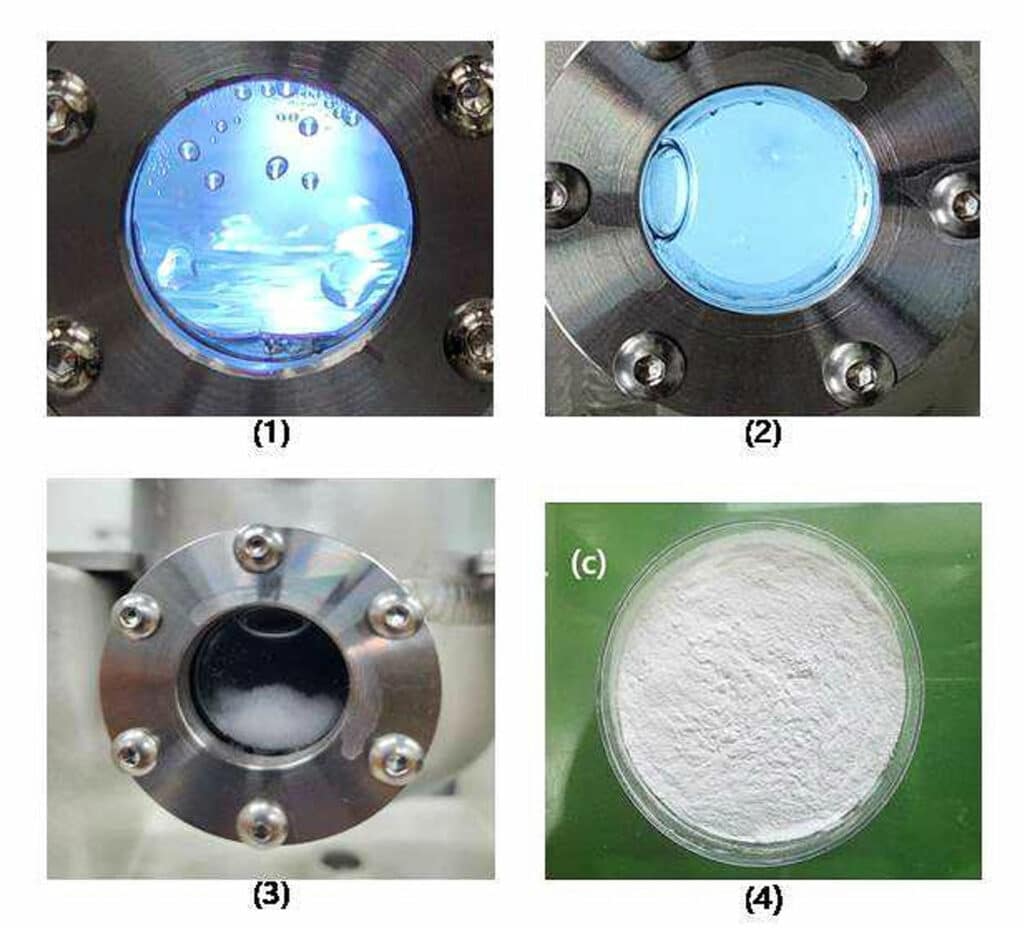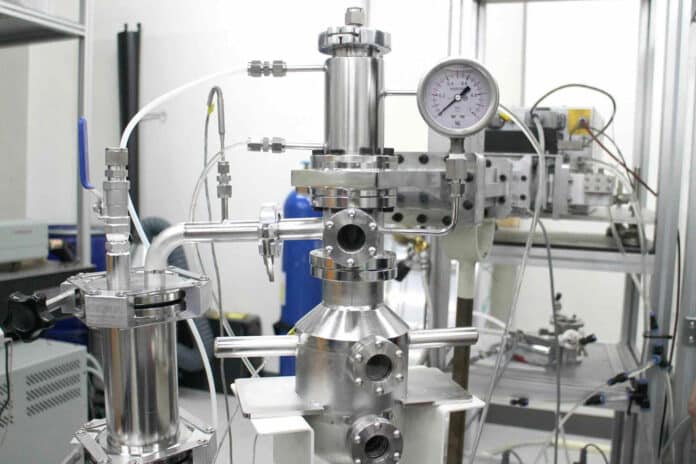The development of lithium-ion batteries (LIBs) has been remarkable in recent years, especially in the field of electric vehicles and energy storage power batteries. Lithium is an essential material for LIBs and has the potential to be used in secondary batteries. The market for consumer products using lithium and LIBs is rapidly growing.
To ensure sustainability, it is crucial to focus on developing technologies for recycling waste batteries and recovering lithium from seawater. Many studies have been conducted to extract lithium from salt lakes and mines, using various techniques for separating and purifying lithium.
In a recent study, a team of researchers from the Korea Institute of Fusion Energy (KFE) suggested an improved method for extracting lithium by applying plasma technology.
According to their findings, the application of CO2 microwave plasma technology has increased the lithium extraction rate by three times compared to the pre-existing methods.
The process of extracting lithium typically involves mixing sodium carbonate (Na2CO3) with lithium-rich saltwater and extracting lithium carbonate(Li2CO3)-which is a mixture of lithium and carbon dioxide. However, this method requires an additional step to separate lithium carbonate from sodium impurities that mix during the extraction process.
An alternative method involves using carbon dioxide gas, but it is not effective for extracting lithium salt from brine, where lithium salt- a bond between lithium and chlorine- exists. Further research is needed to address this issue.
The research of Dr. Ji Hun Kim and Dr. Jong Keun Yang from KFE utilized carbon dioxide microwave plasma technology to extract lithium from brine. This technology involves ionizing carbon dioxide into a plasma state, increasing the lithium extraction rate.
Their experiments utilizing simulated brine as their testing ground showed that this technology increased extraction rates by around three times compared to pre-existing methods of lithium extraction. The use of carbon dioxide plasma has resulted in a remarkable 27.87% extraction rate compared to direct injections of carbon dioxide gas, which only achieved 10.3%.

According to researchers, this is the first research that demonstrated an increase in lithium extraction rates by applying plasma technology to the lithium extraction process.
“It was possible to confirm the effects of the heat and ions, electrons, radicals, etc that are generated when carbon dioxide plasma forms on lithium extraction rates,” said Dr. Yang, who is the first author of the research paper. “We plan to expand research into plasma lithium extraction processes through additional research into carbon dioxide plasma reactions.”
Researchers hope plasma-based lithium extraction processes can be a novel approach for developing technology that can more efficiently extract lithium from seawater with lower concentrations of lithium.
“This research shows a new possible use for plasma technology, which has been used extensively in cutting-edge fields such as semiconductors,” President Suk Jae Yoo of KFE remarked. “Lithium obtained from seawater is a crucial component of fusion energy generation, and we will continue to conduct research into both fusion energy development and fusion energy fuel acquisition.”
Journal reference:
- J.K. Yang, I.S. Park, C.H. Cho, I.J. Kang, J.H. Kim. Novel approach for recovering lithium from simulated aqueous solutions using carbon dioxide microwave plasma. Desalination, 2023; DOI: 10.1016/j.desal.2023.116978
